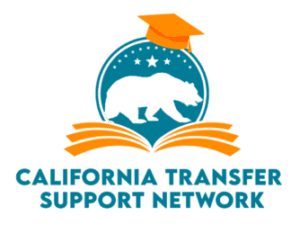California Community Colleges System
The California Community Colleges system is the largest higher education system in the United States, with 1.8 million students attending 116 colleges across the state. It is the largest higher education system in the United States, and it supports and benefits students from various ethnic, racial, and socioeconomic backgrounds.
The mission of the California Community Colleges is to improve student achievement and provide affordable, quality higher education and career technical training opportunities for all Californians.
Improves Social Mobility
The California Community College system promotes social mobility by defining a clear education goal and showcasing the right path to success.
Students receiving an Associate degree or transfer to complete a bachelor’s degree dramatically improve job prospects and provide students with access to careers that were otherwise unthinkable.
The largest system of higher education, the CCC, is dedicated to the mission of improving support for California students interested in going to college and entering jobs or a career they can be proud of.
Some California Community Colleges Chancellor’s Office promotes an online education initiative, whereby community colleges will engage in online college and provide online classes, dual enrollment for high school students, and increasing accommodations for disabled students and international students.
The California Community Colleges Chancellor’s office has also introduced the California Virtual campus program, which aims to help students identify programs, degrees, and professional certificates at one of the 116 California community colleges.
Commitment to Transferring California Community College Students
In recent years, California Community Colleges (CCC) have placed an increased emphasis on transferring students to four-year universities.
Recommended Reading: Using UC TAP for UC Transfer Admission Guarantee (TAG) Program
The California State University (CSU) and University of California (UC) systems are the primary beneficiaries of this trend, as both receive the lion’s share of CCC transfers.
There are several reasons for this focus on transfer students.
First, transferring to a four-year university is generally seen as a way to improve one’s economic prospects.
Second, the California State University and University of California systems often provide a better education than CCCs.
Finally, CCCs are under pressure to increase their graduation rates, and transfer students are more likely to graduate than those who stay at a CCC.
As a result of this increased focus on transfer students, CCCs have made several changes in recent years. These changes include increases in the number of courses offered and the number of counseling staff available to help students plan their transfer.
In addition, many CCCs have developed programs specifically designed to prepare students for transfer.
While it remains to be seen whether these efforts will be successful, there is no doubt that California Community Colleges are placing an increased emphasis on transferring students to four-year universities.
Read Our Post To Learn About the California Community Colleges Registry
Types of Programs Offered at California Community Colleges
Community colleges offer various programs that prepare students for success at four-year universities or in the workforce. These programs include:
- Associate degree programs – typically take two years to complete – prepare students to transfer to a four-year college or university.
- Certificate programs – which can be completed in as little as one semester – prepare students for specific careers in high-demand industries.
- Workforce training programs – provide critical skills training for Californians looking to enter or re-enter the workforce.
California’s community colleges also offer unique programs like distance learning, online classes, and dual enrollment, giving students even more flexibility in earning their degree or certificate.
The California Community Colleges Chancellor’s Office remains steadfast on the right path to delivering students professional programs that provide district and career certificates or deliver a path to a career with good pay and supporting the world.
Benefits of Attending a California Community College
There are many benefits to attending a California Community College, including:
Affordability
Community Colleges are much cheaper than four-year universities, allowing you to save money on tuition and other related expenses.
Community college is often lauded for its affordability, and there are several financial benefits that make it a wise choice for students.
First, community college tuition is typically much lower than that of traditional four-year universities.
Furthermore, many community colleges offer financial aid and scholarships to help students cover the cost of attendance.
Financial aid is available for students who demonstrate significant need, while other financial aid programs are not based on need but are accepted for all students.
In addition, community colleges often have lower fees for books and lab supplies. Finally, community colleges are often located near high schools, saving students on transportation costs.
For all these reasons, a community college is an attractive option for many students looking to further their education without breaking the bank.
Flexibility
Community colleges offer a wide range of program options that can be completed on a part-time or full-time basis, giving you the flexibility to work while you go to school.
Legislators in Sacramento are also keen to increase accessibility through funding to the California Community Colleges Chancellor’s Office.
As the official foundation for California community colleges, the board has emphasized an online education initiative known as the California Virtual Campus program.
Community colleges are affordable and convenient if you’re looking to get a degree, learn a new trade, or just take some classes for personal interest.
As the economy continues to recover, many high school graduates find that they need to complete post-secondary education to compete in the job market.
However, not everyone can afford to go to a four-year college or even has the time to commit to a full-time program.
Moreover, disabled students can benefit from the accessibility of community college because they can take classes in the comfort of their own homes.
Convenience
With 116 colleges located throughout the state, there’s sure to be a school near you.
California colleges provide an inexpensive and convenient way to complete general education requirements, earn an associate degree or certificate, and transfer to a four-year institution.
California colleges also offer noncredit courses and programs for career technical education, adult basic education, and community services.
You can register for classes online or in person at the college of your choice. Registration fees are typically much lower than four-year institutions, making community college an affordable option for many students.
Whether you’re looking to transfer to a four-year university or gain new skills for a career change, community college is a great place to start.
Read: How To Transfer College Using ASSIST
Academic excellence
Many community college faculty members are experts in their field and can provide you with the quality education you deserve.
Students receiving a community college education can develop personable relationships with their instructors because the classes are typically smaller than at a four-year college.
Students can achieve their educational goals while considering the need to serve and identify facilities for the purpose. Many colleges have a tutoring department that provides students with free services.
Professors at community colleges often work at the local four-year university in their expert department or organization field. Community colleges engage with district teachers to accommodate jobs with four-year institutions.
Conclusion
Considering attending college in California? Then you’ll want to learn about the California Community College system! With 116 colleges located throughout the state, there’s sure to be a community college near you.
Plus, community colleges offer a wide range of program options that can be completed part-time or full-time, making them an affordable and convenient option for students of all ages and backgrounds.





